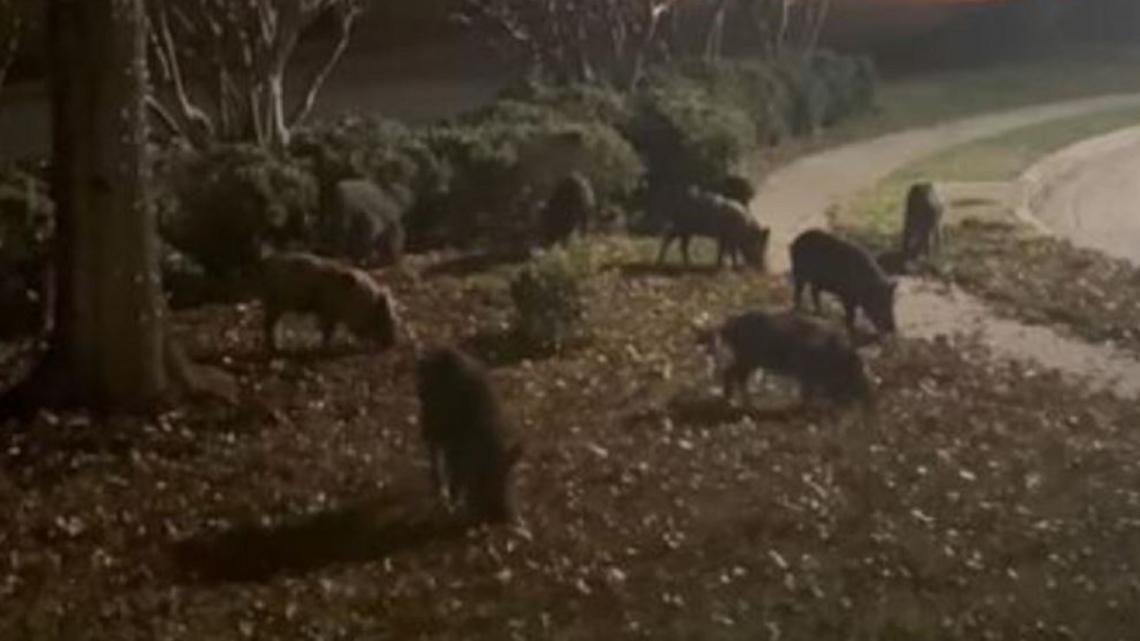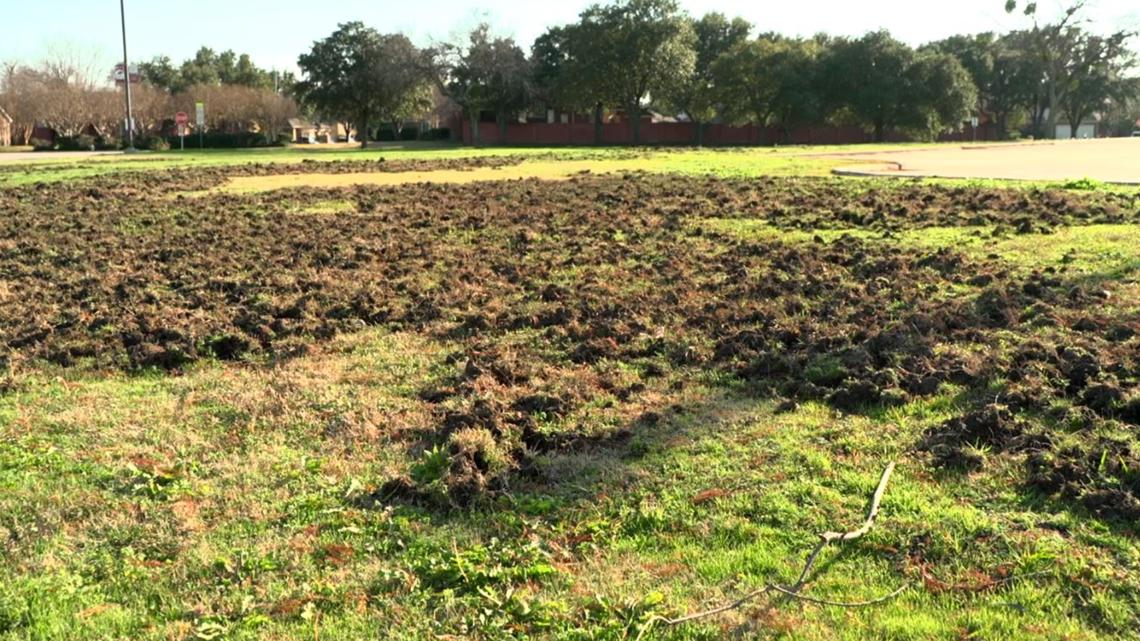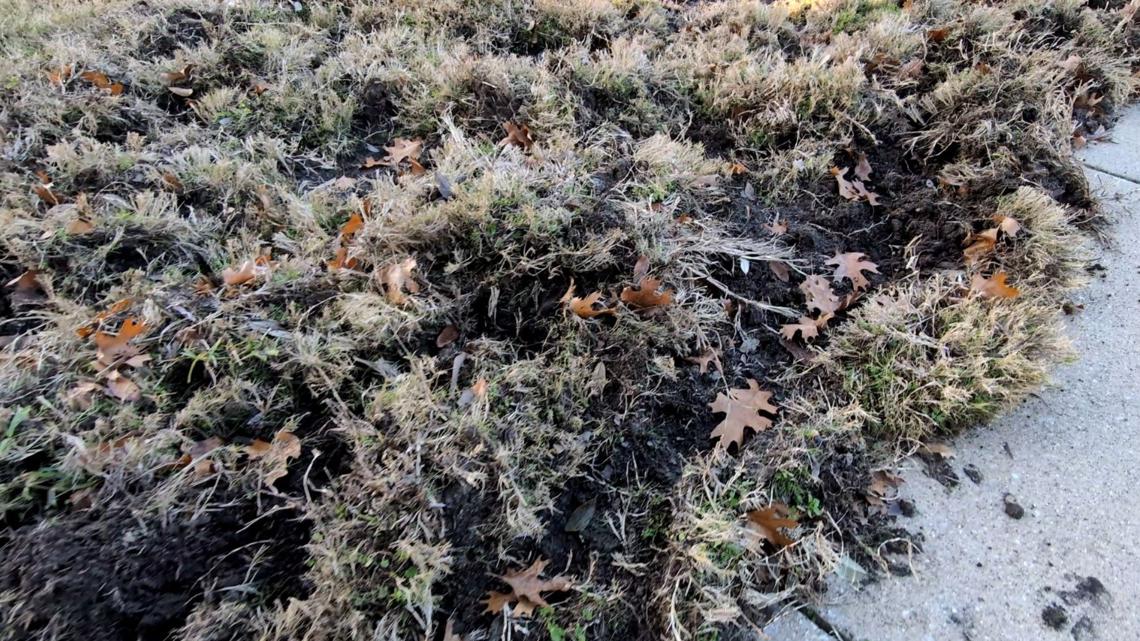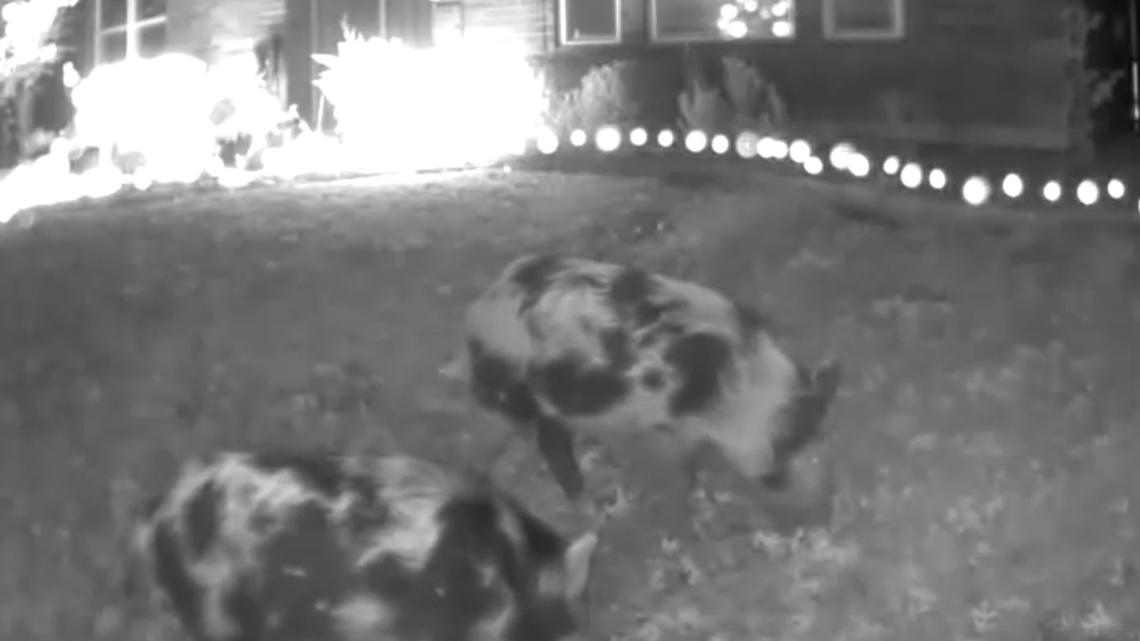As many as ten wild pigs have been spotted roaming the neighborhood together–digging up yards and going through trash left for garbage men.
IRVING, Texas — In Irving, near the Valley Ranch suburb, homeowners face an unwelcome guest: feral hogs.
These invasive animals have been wreaking havoc in yards, tearing up landscapes and leaving a trail of destruction near Barbara Bush Middle School.
The City of Irving is aware of the issue–and has hired a wildlife contractor to handle the problem, but neighbors are growing restless after repairing dug-up yards only to have them rifled through again by the snouts of wild pigs.


“Hopefully, this will come back afterward, but we’ll flip it back over,” said Eric Mendez, a homeowner, as he surveyed the damage to his yard on Donley St.
For weeks, Mendez had been waking up to torn-up sod, a problem he initially couldn’t explain.
“A couple of weeks back, I started seeing some diggings on the ground,” he recalled. Hoping to get answers, Mendez set up a camera on a tree facing his house.
“To my surprise, a pig was on the camera,” he said. But it wasn’t just one pig—it was roughly ten feral hogs, and some were pretty big.
A Growing Problem Across the Neighborhood
Mendez isn’t the only one dealing with this issue. His neighbor faces significant landscaping costs down the street, and the invasive swine has scattered garbage across other properties. Even Barbara Bush Middle School hasn’t been spared, with similar damage seen on campus.


Feral hogs, experts explain, engage in a behavior called rooting.
While they primarily dig for food—insects, vegetation, and plant matter—they are also known to do it out of sheer enjoyment and communication with other wild pigs. This destructive habit causes significant problems, particularly in Texas.
The Economic Toll of Feral Hogs
According to the Texas A&M AgriLife Extension, feral hogs cause an estimated $400 million in damage annually in Texas alone, with national estimates reaching $1.5 billion annually. These costs come from crop destruction, landscape damage, and threats to livestock and public safety.
Farmers and ranchers, who often experience the brunt of this destruction, can hunt or hire someone to hunt feral hogs without a license on private land. And since wild hogs are an unprotected species in Texas, you can kill as many as you like year-round. However, you need a standard hunting license to hunt them on public land.


Yet, controlling the problem is more complicated for suburban homeowners like Mendez.
“My first thought was, like, well, I can go shoot them,” said Mendez. “But I’m like, yeah, I’m in a neighborhood. I can’t just go out there and start blasting.”
With firearms off the table, Mendez has resorted to using a slingshot to scare off the hogs and clapping two 2x4s together.
“I was thinking, can I do anything here?” he wondered. For now, it seems to be the best non-lethal deterrent available.
The City of Irving is also hiring a wildlife contractor to address the issue. Officials believe the hogs are coming from a wooded area near Grapevine Creek. Mendez noted that the problem has escalated:
“I did not expect something this big to start creeping from the creek.”
Dangerous and Rapidly Multiplying
While they might seem harmless or even cute from a distance, feral hogs are far from benign. They are known to attack pets and even humans if they feel threatened. Additionally, their populations can grow rapidly, as a single sow can birth up to two litters of six to eight piglets each year.
For Mendez and his neighbors, time is of the essence.
“It’s a hassle,” Mendez said, hoping the city’s efforts will yield results before the problem worsens.


